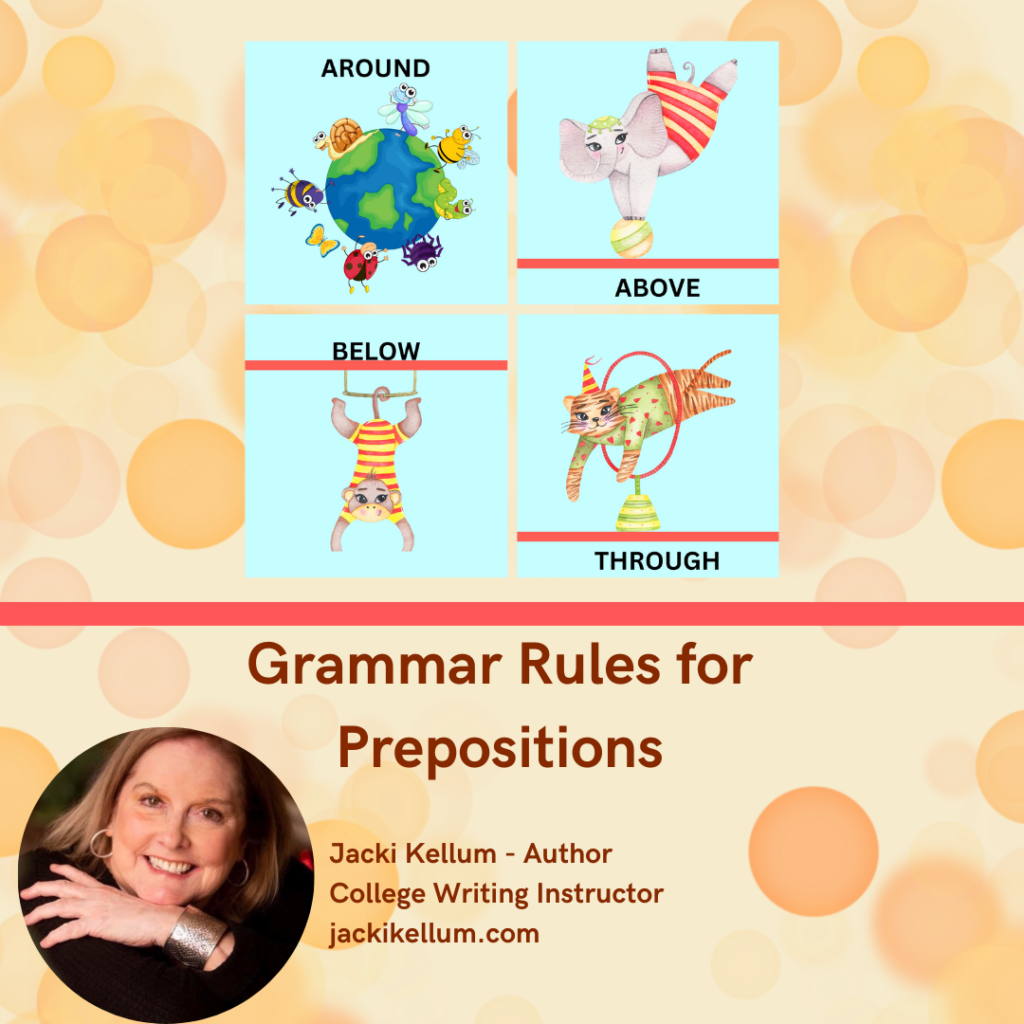
The Rule for Prepositions Is That You Should Not Position A Preposition at the End of A Sentence, Phrase, or Clause.
Like Most Rules, However, There Are Exceptions to That Rule, but Try to Rearrange Your Sentences So That You Have No Dangling Prepositions. Yet, don’t take this rule too far:
“This is the type of errant pedantry up with which I will not put.”
– Winston Churchill – Former Prime Minister of England
What Are Prepositions?
The elephant is balancing above the bar.
The monkey is hanging below the bar.
The snake is standing beside the bar.
The fish is in a bowl on top of the bar.
Note: “of” is also a preposition.
The bird is flying over the bar.
The cat is jumping through the hoop.
The snake is crawling under the bar.
Discover more from Jacki Kellum
Subscribe to get the latest posts sent to your email.
